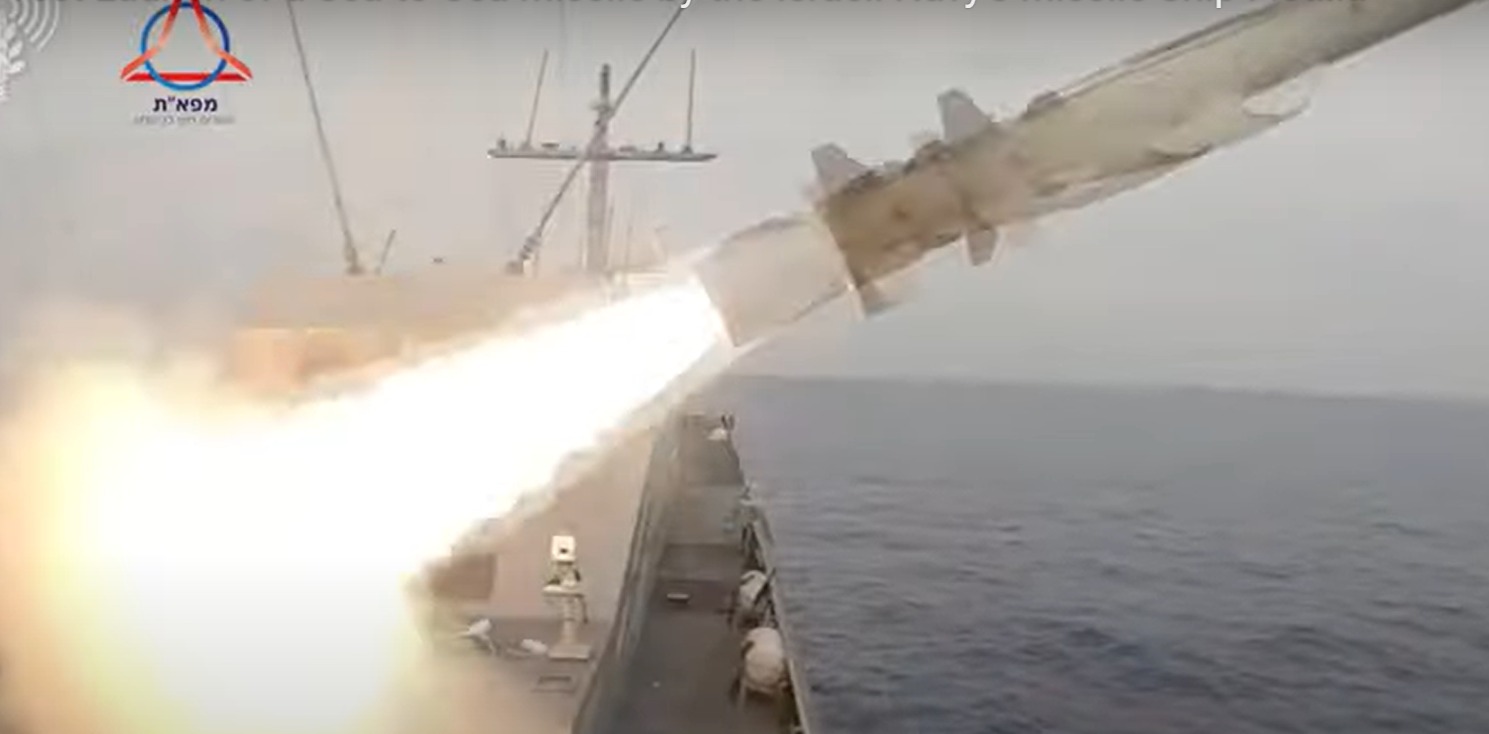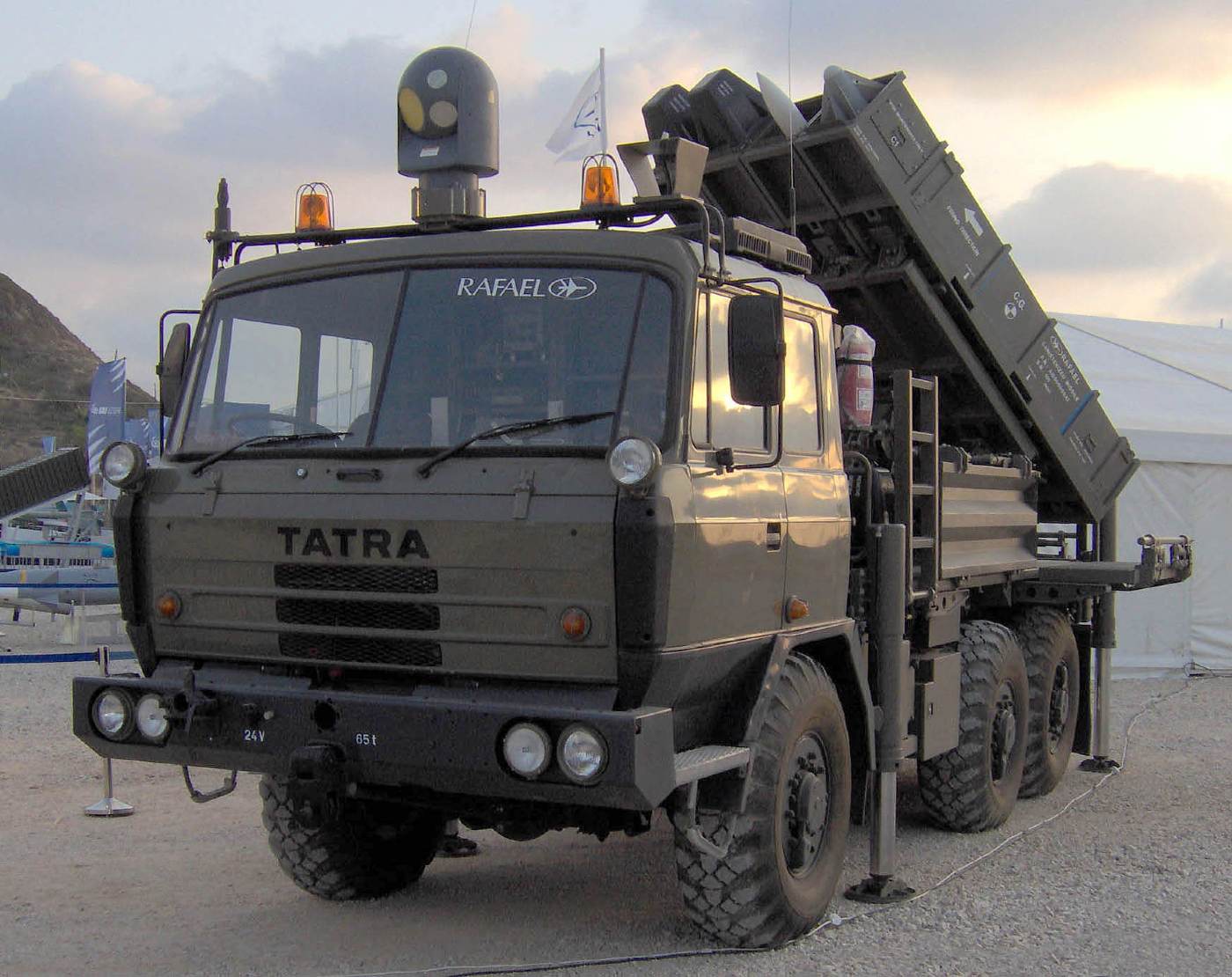Israel has announced the testing of a ‘destructive’ naval strike missile in the thick of a tenuous peace in West Asia. In addition, the Israel Defense Forces (IDF) also disclosed crucial information regarding the integration of the Spyder air defense system into its multi-layered air defense network.
The Israeli Navy, Israel Aerospace Industries (IAI), and the Defense Ministry’s Directorate of Defense Research & Development (DDR&D) conducted an operational test of the new Gabriel 5 sea-to-sea missile on February 6, according to an IDF press release. The missile is also reportedly referred to as the Advanced Naval Strike System by the IDF.
Launched against a mock target simulating an enemy warship as part of a military drill, the missile successfully completed the engagement, tracking, and detection procedures in combat-like situations. Defense officials hailed the test as a significant step toward strengthening Israel’s ability to launch maritime attacks.
The head of DDR&D’s Research and Development Unit, Brig. Gen. Yehuda Elmakias stated, “The successful launch provides the Israeli Navy with greater operational freedom and strengthens our maritime superiority,” emphasizing that the missile would enhance Israel’s capability to safeguard infrastructure, strategic assets, and civilians.
With its ability to precisely target enemy warships, the Gabriel 5 is one of the Israeli Navy’s most sophisticated naval strike systems.
Capt. A., Chief of the Israeli Navy’s Weapons Department, said, “The success of this test marks a significant advancement in the Israeli Navy’s offensive capabilities, allowing us to optimally address threats in the maritime domain. Israeli Navy soldiers operated with great professionalism and precision, and the capabilities we tested and proved in this test are already being applied in combat across all arenas, providing our forces with a substantial operational advantage.”
The release did not provide any details about the missile’s technical specifications. However, Israel has been using the Gabriel series of short-range, air, sea, and ground-launched anti-ship missiles since the 1970s. Five variants of the missile have been produced since the first Gabriel went into service in 1972.
Earlier, Israel conducted the successful firing of a Gabriel-5 missile in 2022. The missile range is believed to be between 200 to 400 kilometers.
According to some open-source information, the Gabriel-5 is equipped with a sophisticated flight control system and an innovative active radar seeker—the lethal combination that allows it to precisely strike a target in a contested or cluttered environment with electronic countermeasures. The missile can operate in all weather conditions, during day or night.

A previous report in Israel-based The Jerusalem Post stated that the missile is 4.3 meters long, weighs 760 kilograms, and has a 150-kilogram high explosive munition warhead that allows target acquisition using INS-based navigation and active radar-homing. According to the report, the missile could be fired in either the fire-and-forget or fire-and-update modes.
It does not travel straight toward its target, making it challenging for an interceptor’s radar or optical system to detect and strike. Additionally, it has sea-skimming characteristics that make it challenging for radars to identify and intercept.
Notably, the operational testing of the missile came as Israel’s biggest adversary in the region, Iran, unveiled its first-ever drone carrier warship on February 6. As recently reported by the EurAsian Times, Iran’s Shahed Bagheri drone carrier is designed as a mobile maritime platform for drones and helicopters and as a support ship for fast attack boats. It is also capable of carrying USVs and short-range cruise missiles.
It is pertinent to note that Israel views Iran and its expanding military capability as a direct threat to its security. Israel has also accused Iran of militarily supplying the Hamas, the Hezbollah, and the Houthis—all of which are fighting a protracted proxy war with Israel in the region.
In a separate development, the IDF also revealed that its Spyder air defense system was integrated into its layered air defense network in October 2023 in the wake of hostilities with Hamas.
Spyder Went Online In Israel After Hamas Attack
The IDF recently confirmed that the Rafael SPYDER air-defense system was operationally deployed by the Israel Defense Forces (IDF) in October 2023 during the conflict with Gaza-based militant group Hamas.
The Surface to Air Python and Derby, also known as SPYDER, is an Israeli indigenous short-range air defense system. It can engage several targets simultaneously and fire in single, multiple, and ripple patterns. It has an all-weather capability to operate both during the day and at night.

“Before the war, the SPYDER system was not integrated due to the prioritization of other interception means within the constraints of available resources,” the IDF Spokesperson’s Unit told the publication. The IDF said that it decided to purchase the equipment in response to the pressing operational requirement during the war. The purchase was made after a professional and operational examination, and the integration was completed systematically with the approval of all relevant authorities.
“The SPYDER system represents a new concept for the Air Defense Wing of the Israeli Air Force,” it added.
Rafael is the primary contractor for the Spyder program, with Israel Aerospace Industries (IAI) as the major subcontractor. It can target various aerial threats, including aircraft, helicopters, unmanned aerial vehicles (UAVs), and precision-guided munitions.
The weapon system is designed to defend both fixed assets and provide point and area defense for mobile forces in combat zones because, in contrast to Israel’s other air defense systems, the Spyder is movable and does not need to be operated from a fixed location. The main components of the Spyder system include a truck-mounted command and control unit, a missile firing unit with Python 5 and Derby missiles, a field service vehicle, and a missile supply vehicle.
Additionally, these vehicles are air-conditioned and protect against biological and chemical threats. The Spyder system’s modular design allows quick field maintenance through rapid module replacement.
The IDF did not specify which version of SPYDER it had purchased or whether a specialized unit had been set up to manage it. The Spyder family includes a range of mobile, quick-response air defense systems with short—to long-range capabilities. These systems include the SPYDER SR, SPYDER MR, SPYDER LR, SPYDER ER, and the newest model, the SPYDER All-in-One. An industry source told Janes that the SPYDER All-in-One (AiO) version is now in service and has successfully intercepted several types of drones.
Rafael earlier said that SPYDER is the only Israeli-made air defense system integrated into NATO’s aerial defense system. The company also noted that SPYDER already offers a quick-response, low-level surface-to-air missile system.
This low-level, quick-response, autonomous technology is used to defend forces on the battlefield by thwarting airborne attacks from helicopters, unmanned aerial vehicles, precision-guided missiles, and other aircraft. The fact that the system was integrated after the country was struck by a crisis is telling of the SPYDER’s capabilities.
- Contact the author at sakshi.tiwari9555 (at) gmail.com
- Follow EurAsian Times on Google News




